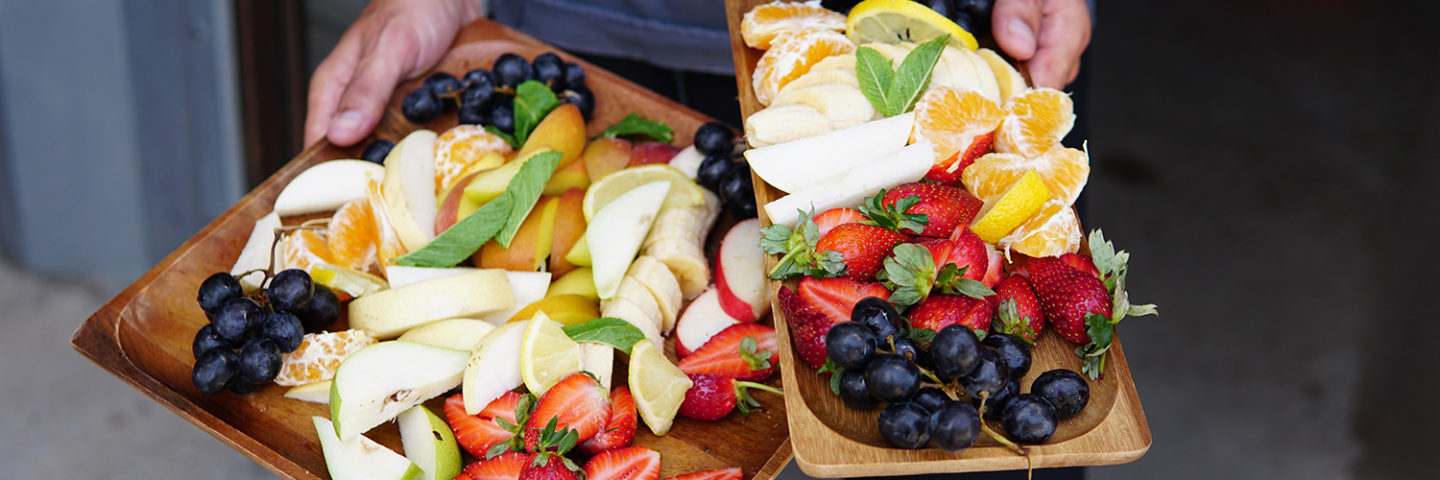
An Interview With Professor Christina Roberto, Ph.D
Christina Roberto runs the Peach Lab, whose vision is “a world without preventable nutrition-related diseases.” She is also the Mitchell J. Blutt and Margo Krody Bludy Presidential Associate Professor of Health Policy at the Perelman School of Medicine at the University of Pennsylvania.
We recently discussed some of her personal approaches to increasing fruit and vegetable (FV) consumption for her toddler son. She has a lot of great insight about the feel and do aspects of PBH’s know-feel-do framework.
Here are a few highlights (edited for length and clarity).
JR: In terms of emotion, how do you get your toddler son excited about fruits and vegetables? And what is the experience like for you?
CR: Well this weekend, I loved spending time with my son making a few different salads together. He loves washing the berries. He stands up on his step stool and we wash them together. He has that special kind of childhood patience where he picks out each individual blackberry and puts them on the paper towel, sneaking a few into his mouth and he’s so delighted. Or the other day, before we could wash a pear, he said, “I want to smell it!” and took the time to sit and smell the pear which helped me slow down and think, “I want to smell the pear too”.
Talking about and preparing food are really wonderful activities for parents and kids to do together, and I think it can bring a lot of joy for both. For example, the other week, we were peeling a carrot together and there was so much to talk about – the noise it’s making, the skin coming off, and how you have to wash the dirt off because they grow in the ground. Every morning since then he has asked to cook something, so we roasted broccoli yesterday morning and revisited our activity at lunch when we were telling Dad about how we made the veggies. He was excited to tell his dad all about it.
JR: In terms of doing, how do you nudge action? And what do FV habits look like in your home?
CR: Through my experience as a behavioral weight loss counselor, I think it’s important to have a couple of simple rules that you try to adhere to every or most days and take on one small habit at a time. Very similar to your own work on the half plate (“At every meal, fill half your plate with fruits and veggies”), my rule is we have a vegetable accompanying every lunch and dinner. That just always has to happen. And then fruit has to be eaten at least once a day. That to me is my checkbox. We always have to have a vegetable with lunch and dinner.
This acts as a habit because if I made dinner and didn’t include a vegetable, I would feel very odd. I’ve followed this rule so many times, with so much repetition, that if I didn’t one day, it would feel like something was off. Like one day I only made pasta and didn’t have a vegetable on the side, and it felt strange and I thought “Oh I didn’t do what I wanted to today”. But being able to execute on those types of rules, requires time to plan ahead so I have enough vegetables for the whole week, and finding that time is hard. And like others, I face the challenge of optimistically buying vegetables at the start of the week that then go bad because I just got too tired or exhausted during the week and didn’t make them. And I think that fear of waste prevents people from getting FV.
JR: I’ve never seen a kid’s section within a retail produce section. It would be neat to have a section at their eye level where you can take them and have a conversation about healthy eating and help them start to pick products out. What do you think?
CR: Whole Foods was doing the Produce Butcher at some locations but I’m not sure if that took off. And there’s also the idea of “misfit” FV that are unusual shapes that kids can get excited about, especially if they were in such an aisle. I know my two year old son loves looking for things of certain colors and shapes. You could have a treasure hunt in the FV aisle by giving kids a little basket and asking them to find five FV of different colors. This could even be done in the frozen and canned FV sections.
Tax and subsidy policy
We also discussed one of Dr. Roberto’s areas of research: taxes and subsidies. She has spent a lot of time studying the taxation of sugary beverages like soda. She would love to see cities use some of the beverage tax money to subsidize FV purchases. Dr. Roberto points out that if you can get people to do less of the unhealthy stuff (sugary drink consumption) and more of the healthy stuff (FV consumption) at the same time, you’ll get the biggest bang for your policy buck, and she points to research on the SNAP program as evidence.
*This interview has been edited for length and clarity.


